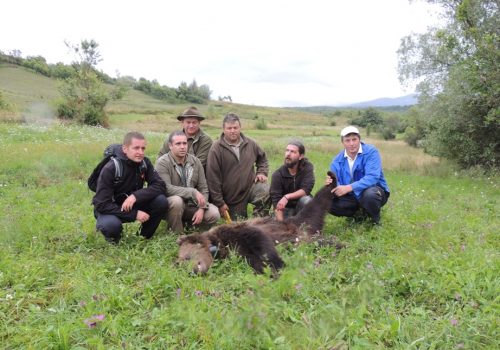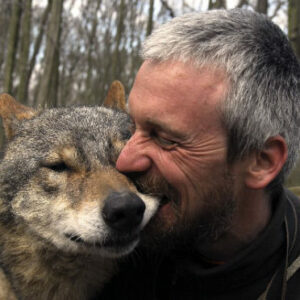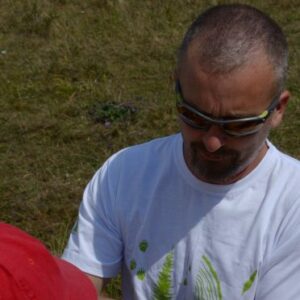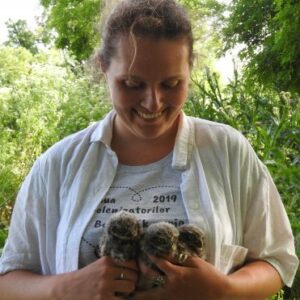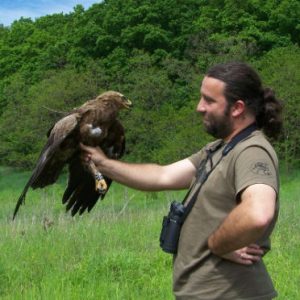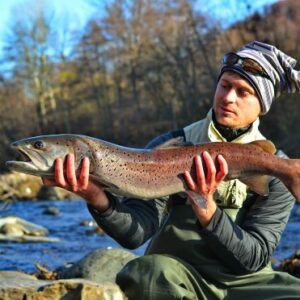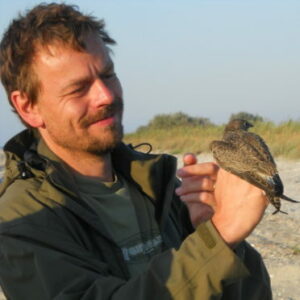On January 1, our colleague Csaba Domokos was notified by the Mures County Environmental Guards about a young bear caught in a poacher’s snare in the Gurghiu Mountains, above the locality of Dulcea. The cub was discovered by an environmental activist looking for illegal logging in the area, and he has immediately alerted the authorities through the national emergency phone service. Together with DVM (Doctor of Veterinary Medicine) Levente Borka-Vitális from Vets4Wild, he went to the scene. The rescue operation was carried out in the presence of the Gendarmerie, the Police, the Environmental Guards, the gamekeeper of the local hunting association and that of a representative of the regional Veterinarian Directorate. The 1 year-old female cub, weighing approximately 40 kg was quickly anesthetized and freed from the snare.
However, while trying to escape from the snare caught around her neck and one of her front legs, she suffered deep cuts on her neck and subaxillary region. The doctor has disinfected the wounds and administered her long-acting antibiotics and anti-inflammatory medicine. Since the incident took place high up on the mountain, far from the nearest village, she was left to recover from anesthesia on the spot.
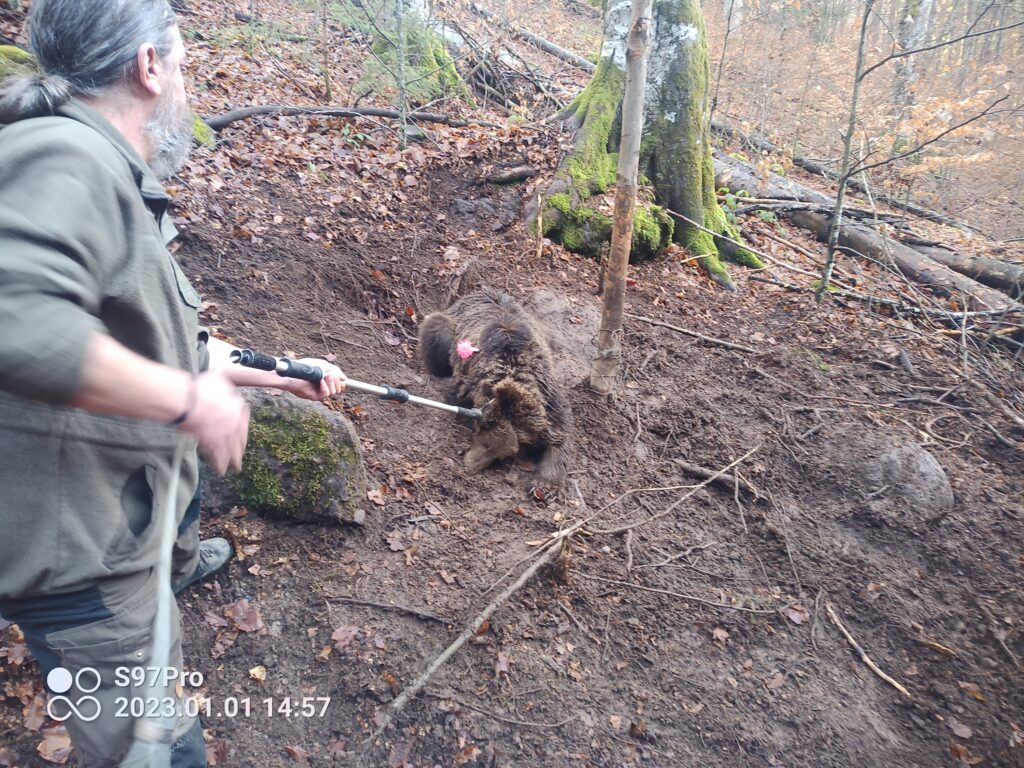


They have later confirmed that the cub started waking up approximately 4 hours after she was anesthetized. On January 2, the local gamekeeper went back to the location and did a wider sweep of the area, also confirming that the cub has left. We are reasonably confident that she will fully recover – while the cuts were deep, the injuries were not life-threatening and the animal was in a good physical condition. Throughout the intervention, the cub’s mother was not spotted in the area – but she should have a reasonable chance of survival even if she doesn’t manage to reunite with her mother (most likely, she would have been anyway abandoned by her mother at the start of the mating season, in April or May).
Approximately 30 m away from the location of the snared cub, there was a dead wolf (an approximately 2 year-old female), caught by its neck in another snare. The wolf died approximately 24-48 hours earlier.
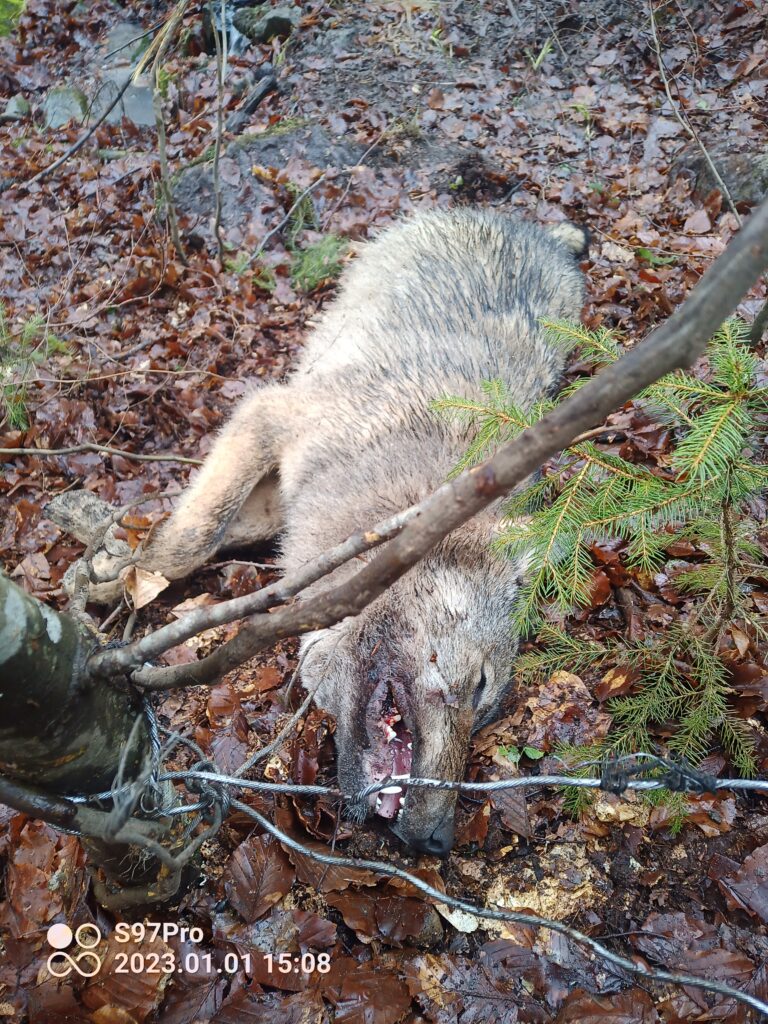
In the days following the incident, a number of mass-media reports and social platform stories presenting the case started circulating the narrative that the snares were mounted by locals fed up with the damages caused by bears. On one hand, these stories almost tried to justify the poaching act as a desperate, last resort measure to prevent bear damages to human property. On the other hand, this narrative – either indirectly or directly – lobbied for the issuing of higher bear hunting quotas. In reality, the respective snares were not targeting bears, but were instead mounted to capture ungulate species (roe deer, wild boar or red deer), for their meat – a rather common practice in many rural areas in Romania. We know this because:
- both, the snare holding the bear cub and the one with the dead wolf in it were tied to thin trees. A 3-4 years-old bear would have easily broken those trees and freed itself, not to mention a bigger one.
- the snares were mounted sometime during the last two weeks (2 weeks prior to the incident, there was a driven hunt for wild boar in the area and the snares were not there yet). Snares targeting specifically bears are not mounted in the winter period, during the animals’ winter sleep (a part of the population has already retreated to dens, even in a mild winter like the current one), but in the period when bears cause the most damages. Additionally, starting with autumn 2022, bear damages in the area were very low, due to the natural foods available to bears (mainly because of a super-abundance of beechnuts).
This being said, snares and other contraptions used by poachers are not selective. This was the 15th bear we have rescued from poaching snares since 2011, in cooperation with Vets4Wild, local wildlife managers and other authorities.



